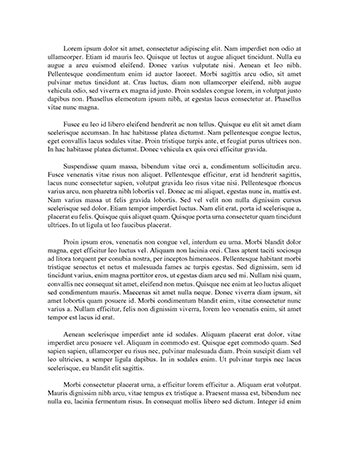mla
ReferencesRoss, D. S. (2022). Treating hypothyroidism is not always easy: when to treat subclinical hypothyroidism, TSH goals in the elderly, and alternatives to levothyroxine monotherapy. Journal of Internal Medicine, 291(2), 128-140.Wiesner, A., Gajewska, D., & Pa?ko, P. (2021). Levothyroxine interactions with food and dietary supplements–a systematic review. Pharmaceuticals, 14(3), 206.Wilson, S. A., Stem, L. A., & Bruehlman, R. D. (2021). Hypothyroidism: Diagnosis and treatment. American family physician, 103(10), 605-613.Scenario 2: Joe\\\\\\\\\\\\\\\'s Type II Diabetes and Renal ConcernsProblem DescriptionJoe, a 48-year-old male with Type II Diabetes Mellitus, presents with poorly controlled blood glucose levels as indicated by a fasting blood glucose of 225 mg/dL and HbA1c of 7.5%. Additionally, he has chronic kidney disease (CKD) with an eGFR of 28 and elevated creatinine levels.Treatment Plan and MedicationsGiven Joe\\\\\\\\\\\\\\\'s diabetic condition coupled with CKD, a careful choice of antidiabetic medication is crucial. Metformin is generally first-line; however, his renal function prohibits its use (Song et al., 2021). A suitable alternative would be:Medication OrderDapagliflozin 10 mg orally, once daily before breakfast.Monitoring and Follow-UpJoe\\\\\\\\\\\\\\\'s response to Dapagliflozin should be closely monitored through regular kidney function tests and HbA1c levels every 3 months to assess efficacy and kidney health (Jabbour et al., 2020). Blood pressure and cardiovascular status should also be regularly evaluated.Patient EducationIt is important to educate Joe on recognizing signs of hypoglycemia and the importance of maintaining a balanced diet alongside medication. He should also be informed about the potential for increased urination and signs of urinary tract infections, as these are common side effects of SGLT2 inhibitors like Dapagliflozin (Mayhoub et al., 2022).ReferencesJabbour, S. A., Frías, J. P., Ahmed, A., Hardy, E., Choi, J., Sjöström, C. D., & Guja, C. (2020). Efficacy and safety over 2 years of exenatide plus dapagliflozin in the DURATION-8 study: a multicenter, double-blind, phase 3, randomized controlled trial. Diabetes Care, 43(10), 2528-2536.Mayhoub, H., BouBou, A., & Kaddar, N. (2022). Assessment of Genital and Urinary tract infections in patients with Type 2 Diabetes Mellitus treated with Dapagliflozin. Bulletin of Pharmaceutical Sciences. Assiut, 45(2), 953-965.Song, A., Zhang, C., & Meng, X. (2021). Mechanism and application of metformin in kidney diseases: An update. Biomedicine & Pharmacotherapy, 138, 111454.Scenario 3: Management of Diabetes Mellitus in a Commercial DriverProblem and Plan for JoseJose, a 55-year-old truck driver with poorly controlled Type II Diabetes Mellitus, presents with significant hyperglycemia (fasting blood glucose of 325 mg/dL, HgA1C = 10.6%). His current regimen of Metformin and Glipizide is inadequate for controlling his glucose levels.Medication AdjustmentConsidering his current regimen and the need for stricter glucose control, an addition of a sodium-glucose cotransporter 2 (SGLT2) inhibitor could be beneficial. However, given his sulfa allergy and the possible sulfa cross-reactivity in some SGLT2 inhibitors, careful selection is essential. Empagliflozin, which has no known sulfa allergy concerns, can be initiated (Shi et al., 2022).PrescriptionEmpagliflozin 10 mg PO daily, to be taken in the morning.MonitoringThere should be a monthly follow-up for the first three months to monitor fasting blood glucose and HgA1C. There should also be regular monitoring of renal function and signs of urinary tract infections or dehydration (Refardt et al., 2020).Patient EducationJose should be informed about the importance of maintaining his medication schedule, recognizing signs of hypoglycemia and hyperglycemia. He should also be given to understand the importance of regular exercise and diet control. Additionally, he should be educated about the potential side effects of Empagliflozin, including the risk of genital infections and dehydration (Meyer et al., 2022).ReferencesMeyer, K. S., Roberts, J., & Sasser Croley, K. (2022). Part Four: Identifying, Managing, and Preventing Adverse Effects of Diabetes Medications. The Senior Care Pharmacist, 37(8), 310-316.Refardt, J., Imber, C., Sailer, C. O., Jeanloz, N., Potasso, L., Kutz, A., ... & Christ-Crain, M. (2020). A randomized trial of empagliflozin to increase plasma sodium levels in patients with the syndrome of inappropriate antidiuresis. Journal of the American society of nephrology, 31(3), 615-624.Shi, F. H., Li, H., Shen, L., Xu, L., Ge, H., Gu, Z. C., ... & Pu, J. (2022). Beneficial effect of sodium-glucose co-transporter 2 inhibitors on left ventricular function. The Journal of Clinical Endocrinology & Metabolism, 107(4), 1191-1203.Scenario 4: Management of GERD in an Elderly WomanProblem and Plan for JennyJenny, a 63-year-old woman, is experiencing persistent symptoms of GERD despite using OTC Prevacid. Her symptoms suggest a need for a more potent acid suppressive therapy and lifestyle modifications.Medication AdjustmentGiven the partial response to Prevacid and severity of symptoms, especially nocturnal symptoms, switching to a more potent Proton Pump Inhibitor (PPI) could be warranted (Rettura et al., 2021).PrescriptionEsomeprazole 40 mg PO daily, 30 minutes before breakfast.MonitoringThere should be a follow-up after 4 weeks to assess symptom control. There should also be an annual review or sooner if symptoms persist or worsen (Naik et al., 2020).Patient EducationJenny should be advised to avoid eating late at night and to elevate the head of the bed to reduce nocturnal symptoms. She should avoid foods that can exacerbate GERD symptoms, such as fatty foods, chocolate, caffeine, and spicy foods. She should be made aware of the potential side effects of long-term PPI use, including the risk of osteoporosis and vitamin B12 deficiency, should be communicated (Castellana et al., 2021).ReferencesCastellana, C., Pecere, S., Furnari, M., Telese, A., Matteo, M. V., Haidry, R., & Eusebi, L. H. (2021). Side effects of long-term use of proton pump inhibitors: practical considerations. Pol Arch Intern Med, 131(6), 541-549.Naik, R. D., Meyers, M. H., & Vaezi, M. F. (2020). Treatment of refractory gastroesophageal reflux disease. Gastroenterology & Hepatology, 16(4), 196.Rettura, F., Bronzini, F., Campigotto, M., Lambiase, C., Pancetti, A., Berti, G., ... & Bellini, M. (2021). Refractory gastroesophageal reflux disease: a management update. Frontiers in medicine, 8, 765061.


